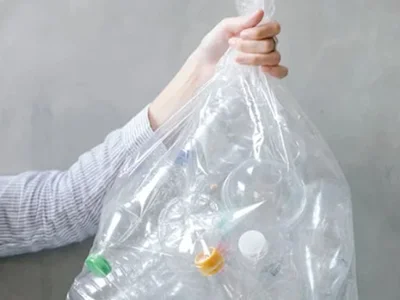Our Reclaim Waste Diaries
Wiki Article
Some Ideas on Reclaim Waste You Should Know
Table of ContentsReclaim Waste for BeginnersAll about Reclaim WasteWhat Does Reclaim Waste Mean?Reclaim Waste for BeginnersThe Best Guide To Reclaim Waste
Explore the types, occurrences, and kinds of liquid waste. Residential sewer waste refers to the waste and products from a household septic system. This type of waste is created by humans in houses, institutions, and other buildings. This only includes sewage-disposal tanks that have a drainpipe area. The proper monitoring and disposal of residential sewage waste need fluid waste to be transferred to a sewer treatment plant where the proper approaches and devices are related to cleanse and deal with waste.
Business waste frequently includes prospective threats, such as flammable products or a mix of fluid and strong waste products, and needs an extra innovative and in-depth disposal procedure. The disposal of business waste usually entails the filtration of waste before transport to ensure safe and appropriate disposal. Hazardous waste is developed from byproducts and runoff of industrial processes and production.
This type of waste can not make use of the same sewage administration transport or procedures as septic or business fluids. The hazardous waste management procedure requires the examination and testing of liquid waste before it undergoes the disposal procedure (liquid waste disposal melbourne). Drainage waste is the fluid waste that originates from runoff and excess stormwater in extremely populated areas or cities
Runoff waste can trigger contamination and flooding if not managed effectively. Learn more concerning sewage system cleansing and waste monitoring. Making certain correct waste monitoring can prevent calamities and lower environmental harm. Both individuals in property settings and specialists in commercial or manufacturing sectors can take advantage of recognizing the processes and policies of liquid waste monitoring.
An Unbiased View of Reclaim Waste
Call PROS Solutions today to learn more about our waste monitoring and disposal solutions and the proper methods to take care of the liquid waste you create.(https://share.evernote.com/note/7e2c20e2-4e08-1523-1aa2-d06cf7e27761)Do you know what takes place to your water when you draw the plug, flush the bathroom or drain pipes the washing machine? No? Well, it's worth knowing. This supposed 'wastewater' is not only an essential resource yet, after treatment, will certainly be launched to our land, rivers or the sea. Made use of water from bathrooms, showers, baths, kitchen sinks, washings and commercial processes is called wastewater.

water made use of to cool down machinery or clean plant and devices). Stormwater, a type of wastewater, is runoff that streams from farming and urban areas such as roofs, parks, gardens, roads, courses and seamless gutters into stormwater drains pipes, after rainfall. Stormwater streams without treatment directly to regional creeks or rivers, at some point reaching the ocean.
Reclaim Waste Can Be Fun For Everyone
In Queensland, many wastewater is treated at sewage treatment plants. Wastewater is delivered from residential or commercial websites via a system of sewers and pump stations, known as sewerage reticulation, to a sewage treatment plant. Local governments develop, keep and run most sewage treatment plants. Operators are certified under the Environmental Management Act 1994 to discharge treated wastewater at an appropriate ecological requirement into waterways.The Division of Natural Resources advises neighborhood federal governments concerning handling, operating and maintaining sewage systems and therapy plants. In unsewered locations, regional governments may require owners to set up individual or home sewer therapy systems to deal with residential wastewater from bathrooms, kitchen areas, shower rooms and laundries. The Division of Natural Resources authorizes making use of home systems when they are confirmed to be effective.
Most stormwater receives no article source therapy. In some new neighborhoods, therapy of some stormwater to eliminate litter, sand and crushed rock has actually begun utilizing gross pollutant catches. Wastewater treatment takes place in four stages: Gets rid of solid issue. Larger solids, such as plastics and various other objects mistakenly discharged to sewage systems, are eliminated when wastewater is passed through displays.
Wastewater after that moves right into huge storage tanks where solids settle and are gotten rid of as sludge. Grease and scum are skimmed from the surface area. Utilizes little living microorganisms referred to as micro-organisms to break down and eliminate continuing to be liquified wastes and fine bits. Micro-organisms and wastes are included in the sludge. Gets rid of nitrogen and phosphorus nutrients that might create algal blooms in our waterways and intimidate aquatic life.
All about Reclaim Waste
Nutrient removal is not available at all sewer therapy plants due to the fact that it calls for costly specialised equipment. It is becoming more usual in Queensland. Clear fluid effluent generated after therapy might still contain disease-causing micro-organisms. If this effluent is launched right into rivers such as rivers or the sea, the micro-organisms will eventually pass away out.
This generally suggests wastewater has to be treated or impurities gotten rid of before it can be discharged to rivers. The majority of wastewater streams into the sewerage system. Under the Act, local federal governments provide authorizations and licences for eco pertinent activities (ERAs) including wastewater launches that could have a neighborhood effect. The department provides approvals and permits to Periods including wastewater releases that could have a local or statewide impact.
A Biased View of Reclaim Waste
Tracking supplies valid details concerning water top quality and can confirm that licence problems are being fulfilled. The details obtained through monitoring provides the basis for making water quality decisions.Report this wiki page